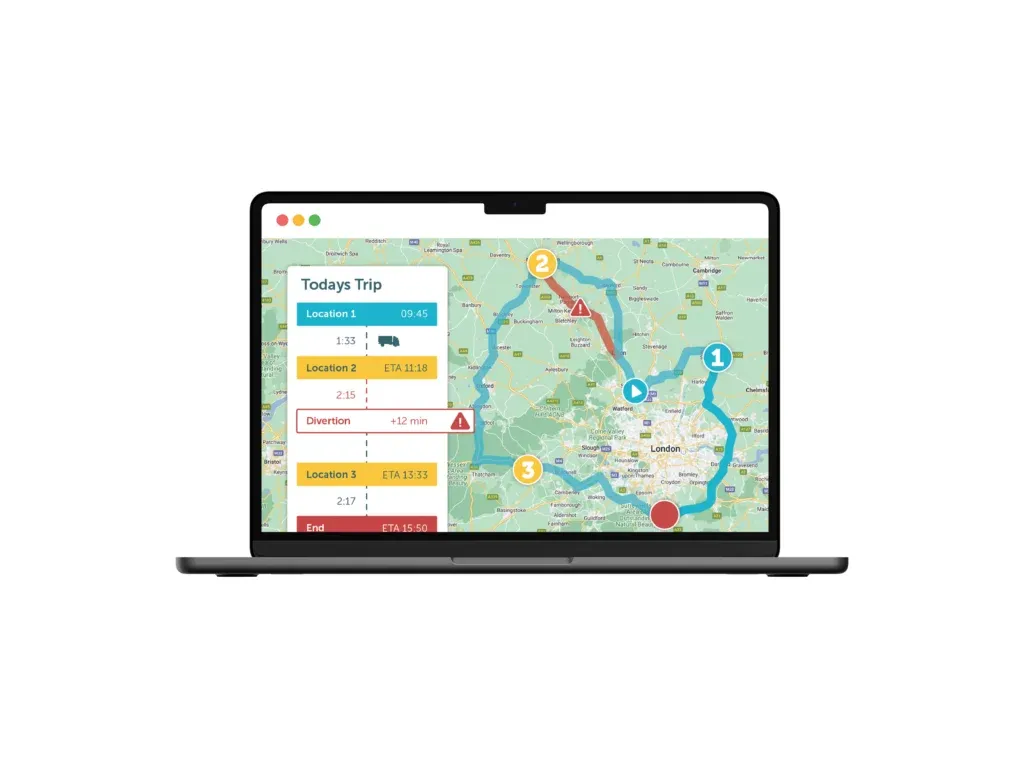Companies with fleets of vehicles often face challenges in terms of efficiency, productivity and profitability. Managing a fleet of vehicles, ensuring they are used to their full capacity, and making sure they’re dispatched in a timely and cost-effective manner can be a daunting task. This is where fleet route optimisation comes in. It is the process of using advanced technology, algorithms, and software to optimise delivery routes, reduce costs, and improve efficiency. This post looks at what fleet route optimisation is, how it works, and the benefits it offers.
What Is Route Optimisation?
Route optimiation is the process of determining the most efficient and cost-effective route for a vehicle to travel from one location to another. This process can involve a single vehicle or an entire fleet of vehicles. Route optimisation is used in various industries, including transportation, delivery, logistics, and field service management. The goal of route optimisation is to reduce travel time, distance, and fuel consumption. Optimising routes maximizes the number of deliveries or service calls that can be made within a given period.

start optimising routes
Get started with optimising routes with FleetGO’s Route Optimisation Software. Maximise efficiency and minimize costs with FleetGO.
Stop wasting fuel, begin saving money!

How Does Route Optimisation Work?
Route optimisation involves several steps. The first step is to collect data about the locations to be visited, such as addresses, distances between locations, delivery or service times, and the number of stops. This data can be collected manually or through GPS devices and other fleet tracking tools. The next step is to use route optimisation algorithms to calculate the most efficient route based on the collected data. The algorithm takes into account various factors, such as traffic conditions, road closures, and delivery or service time frames. Optimised routes are communicated to drivers or dispatchers, enabling them to adjust schedules accordingly.
Delivery Route Optimisation
Delivery route optimisation focuses specifically on optimising delivery routes. Delivery companies, including courier services, parcel delivery companies, and food delivery services, can benefit from delivery route optimisation. These types of companies can reduce delivery times, increase the number of deliveries per day, and improve customer satisfaction. Delivery route optimisation can reduce fuel costs as well as vehicle wear and tear.
Fleet Management Route Optimisation
Fleet management route optimisation is the process of optimising routes for an entire fleet of vehicles. This can involve dozens or even hundreds of vehicles. Fleet management route optimisation can help companies reduce fuel costs, improve delivery times, and increase the number of deliveries made per day. It can also help companies manage their fleets more efficiently by ensuring that vehicles are used to their full capacity and are dispatched in a timely, cost-effective manner.
Route Optimisation Algorithm
A route optimisation algorithm is a mathematical formula that calculates the most efficient routes based on various parameters. Factors include distance, time, traffic conditions, and delivery or service windows. There are many different types of route optimisation algorithms, including heuristic algorithms and genetic algorithms. The choice of algorithm depends on the specific requirements of the application, such as the number of stops, the size of the vehicle, and the number of vehicles in the fleet. The rise of machine learning and artificial intelligence is a big factor in this area.
Route Optimisation Software
Route optimisation software is designed to automate route optimisation processes. Route optimisation software can collect data about the locations visited, calculate the most efficient routes, and communicate these optimised routes to drivers or dispatchers. Route optimisation software can also provide real-time information about traffic conditions, road closures, and weather conditions, allowing drivers and dispatchers to adjust the route as needed. There are many different types of route optimisation software, ranging from basic software for small businesses to complex software for large enterprises.
Vehicle Route Optimisation
Vehicle route optimisation is the process of optimising the routes for a single vehicle or a group of vehicles. Vehicle route optimisation can help companies reduce fuel costs, improve delivery times, and increase the number of deliveries made per day. Vehicle route optimisation can be used in various industries, including transportation, field service management, and waste management. For example, waste management companies can use vehicle route optimisation to optimise the collection routes for garbage trucks, thereby reducing fuel consumption and improving efficiency.
Route Optimisation Techniques
There are several route optimisation techniques that can be used to improve efficiency and reduce costs. Some of the most common techniques include:
- Clustered Routing: This technique involves grouping stops that are close to each other. It reduces the travel time and distance between stops.
- Dynamic Routing: Adjusting the route based on real-time changes in traffic conditions, road closures, and other factors.
- Time-Window Routing: Optimising the route based on delivery or service time windows. This ensures that deliveries or service calls are made within specified time frames.
- Multi-Depot Routing: Optimising routes for multiple depots or warehouses, ensuring vehicles are dispatched from the depot that’s closest to the first stop.
Conclusion
Route optimisation is a powerful way to improve efficiency, reduce costs, and increase profitability. By using advanced technology, algorithms, and software, companies can optimise their delivery routes and reduce fuel consumption. Whether a small business with a single vehicle or an enterprise with a large fleet of vehicles, route optimisation can help streamline operations and stay competitive in today’s fast-paced business environment.
Disclaimer
This content is provided for informational purposes only and is not meant to be an endorsement or representation by FleetGO.com or any other party. This information may contain inaccuracies or typographical errors, despite our efforts to ensure accuracy. FleetGO.com accepts no responsibility or liability for any errors or omissions, and is not responsible for the contents of any linked website or any link contained in a linked website. Please refer to our full disclaimer for more details.


